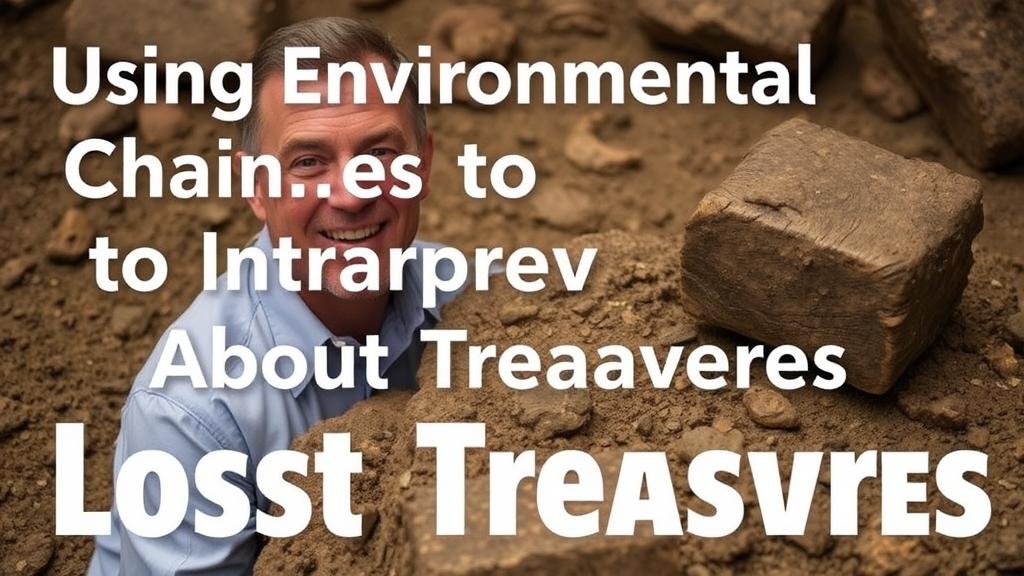Using Environmental Changes to Interpret Clues About Lost Treasures
Using Environmental Changes to Interpret Clues About Lost Treasures
The pursuit of lost treasures has captivated human imagination for centuries, merging adventure with history, mystery, and sometimes even science. In this exploration, one vital aspect increasingly comes into play: environmental changes. Natural alterations in the landscape, climate patterns, and ecological dynamics can all provide significant clues about the whereabouts of hidden riches. This article delves into how understanding these environmental shifts can lead treasure hunters closer to elusive treasures.
Understanding Environmental Indicators
Environmental changes can serve as critical indicators that help in locating lost treasures. These indicators may include shifts in vegetation patterns, erosion of landforms, sediment deposition, and alterations in water bodies. Each of these factors can reflect historical human activity or natural events that may have concealed valuable items or ancient artifacts.
- Vegetation Patterns: Anomalies in plant growth can suggest the presence of buried structures or treasures. For example, certain species thrive in nutrient-rich soils disturbed by human activity.
- Erosion and Sedimentation: Areas where soil erosion has occurred can expose hidden items. Likewise, sediment deposition can bury items of value deeper, indicating their potential location.
By mapping these changes and understanding their context, treasure hunters can hone in on locations worth investigating. For example, researchers exploring the ancient city of Pompeii utilized vegetation studies to identify areas where ancient human activity had taken place, leading to significant finds.
Case Study: The Hunt for Shipwrecks in Changing Seas
The migration of shipwrecks to different locations due to oceanic changes provides a compelling case study. Driven by factors such as sea level rise and coastal erosion, shipwrecks can be unearthed or transported from their original resting places.
One notable example is the search for the long-lost galleon San José, which sank off the coast of Colombia in 1708. Research by marine archaeologists indicated that shifting currents and increased sediment yet to be caused by climate change exacerbated the possibility of locating the ships remains. The Colombian government’s use of modern underwater drones demonstrated that through environmental changes, they could track and pinpoint potential areas rich in treasure.
Historical Weather Patterns as Clues
Historical weather patterns are another beneficial tool in locating lost treasures. Changes in climate–fluctuations in precipitation, temperature, and severe weather events–can leave behind traces indicating human habitation or activity that could lead to treasures.
- Droughts: Historical records of droughts might signal periods during which rural communities abandoned their properties, possibly leaving behind content of value.
- Flooding: Terrains altered by floods can wash away superficial layers of earth, exposing buried treasures.
For example, following a severe drought in the Midwest United States, archaeologists uncovered treasures from the Mississippian culture that had been hidden for centuries under layers of soil disturbed by farming activities.
Modern Technology and Environmental Clues
The application of modern technology is revolutionizing the search for lost treasures. Tools such as Geographic Information Systems (GIS), LiDAR (Light Detection and Ranging), and satellite imagery allow researchers to visualize and analyze environmental changes with unprecedented precision.
LiDAR technology has been particularly instrumental in uncovering lost cities and structures hidden within dense forests. For example, the discovery of the ancient Maya city of Caracol in Belize was made possible by LiDAR, which revealed structures previously concealed by extensive vegetation.
Actionable Takeaways
For aspiring treasure hunters and archaeologists, understanding how environmental changes impact the search for lost treasures offers several actionable strategies:
- Study historical changes in the environment and correlate them with potential human activity.
- Use modern technology to analyze landscapes and identify areas that may have undergone significant changes.
- Collaborate with environmental scientists to gain insights into how ecological dynamics may inform treasure hunting efforts.
To wrap up, environmental changes present a plethora of indicators in the search for lost treasures. By tapping into historical data, utilizing modern technology, and considering ecological impacts, treasure seekers can enhance their chances of discovery while contributing to a broader understanding of human history and activity.



